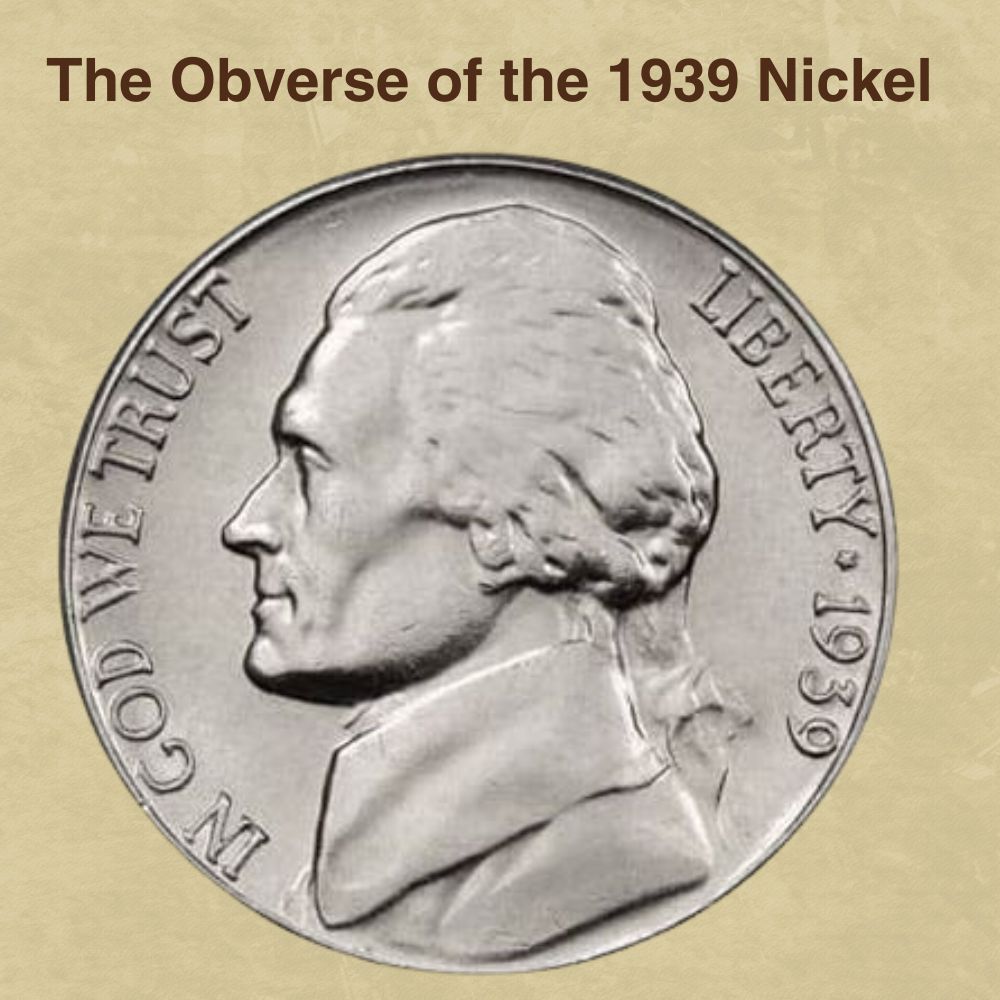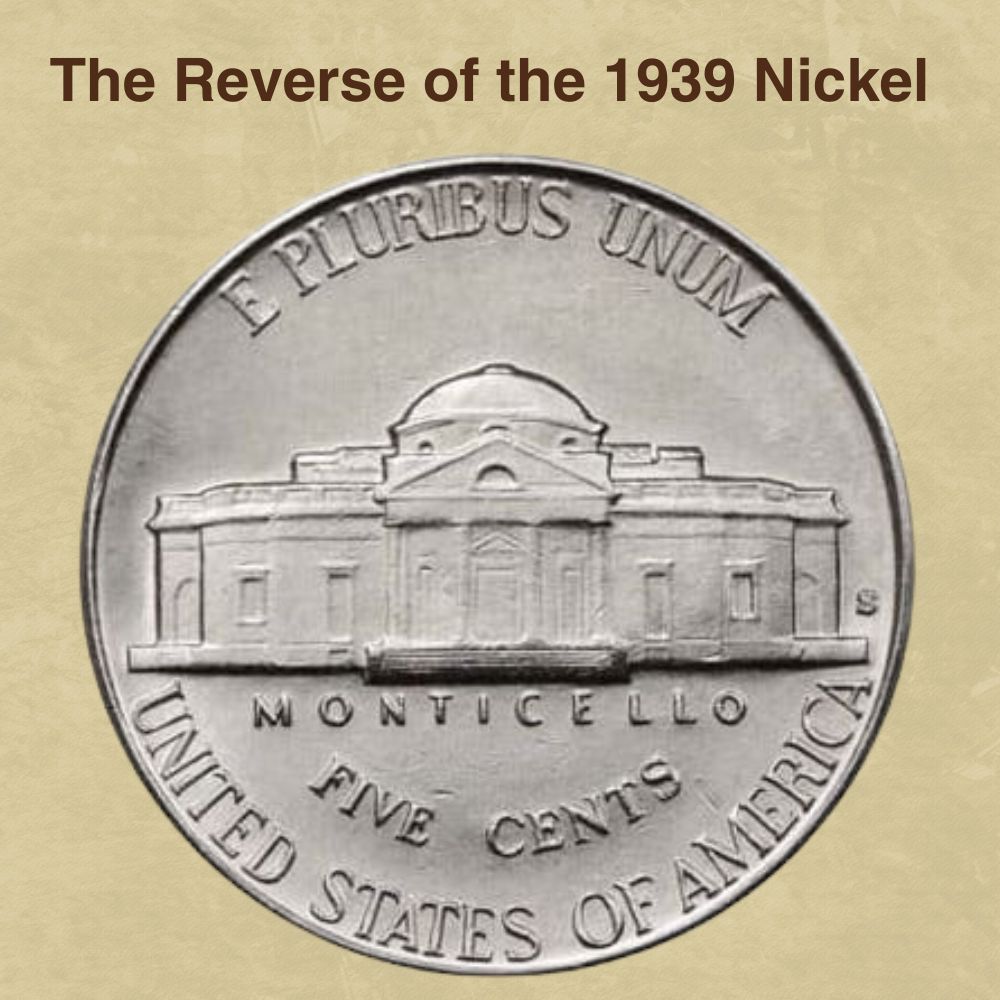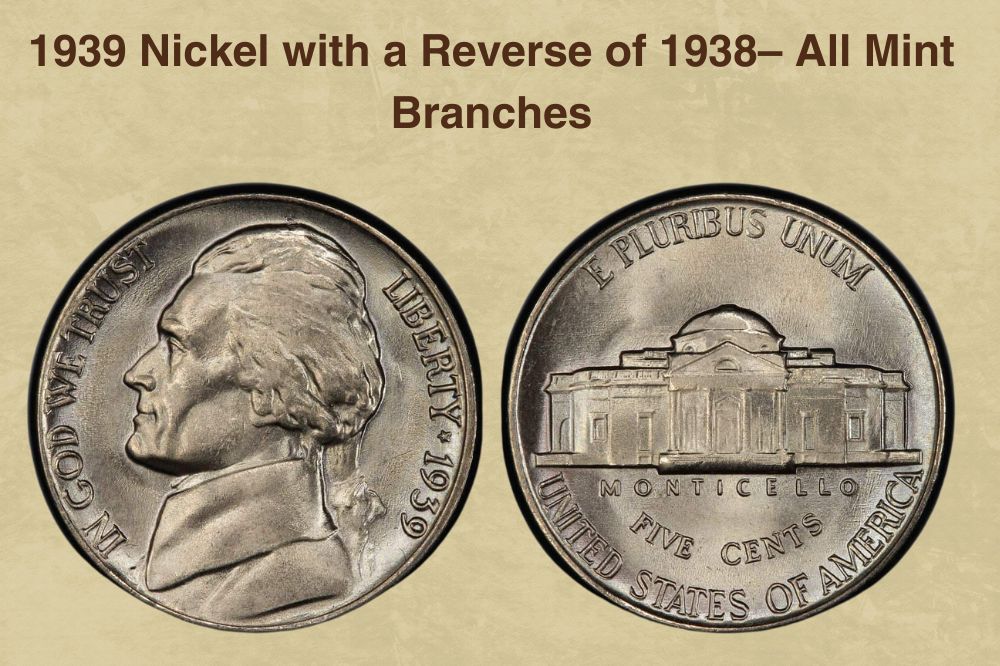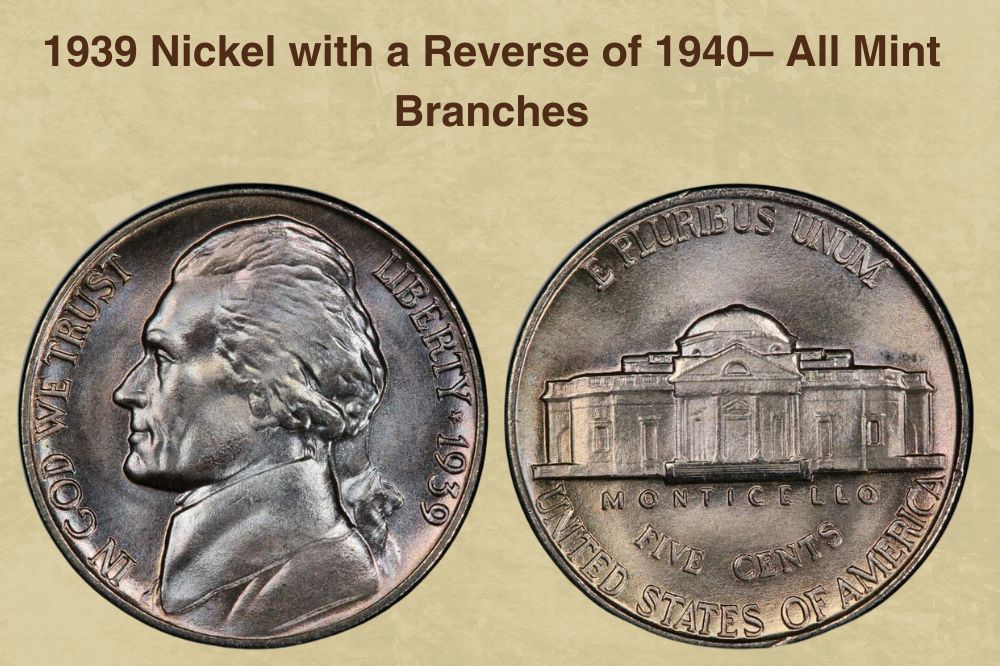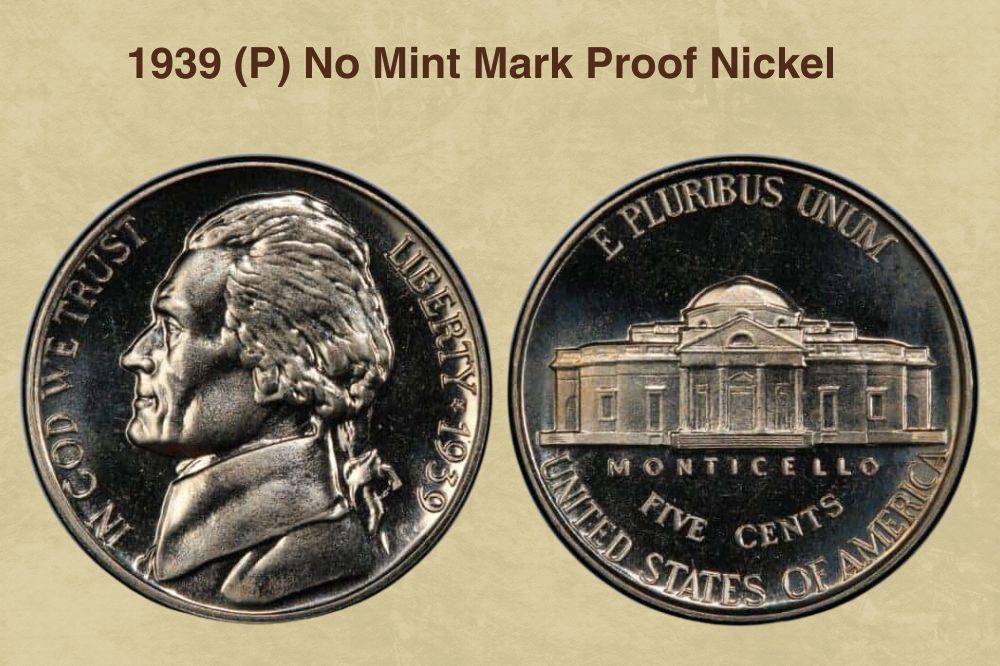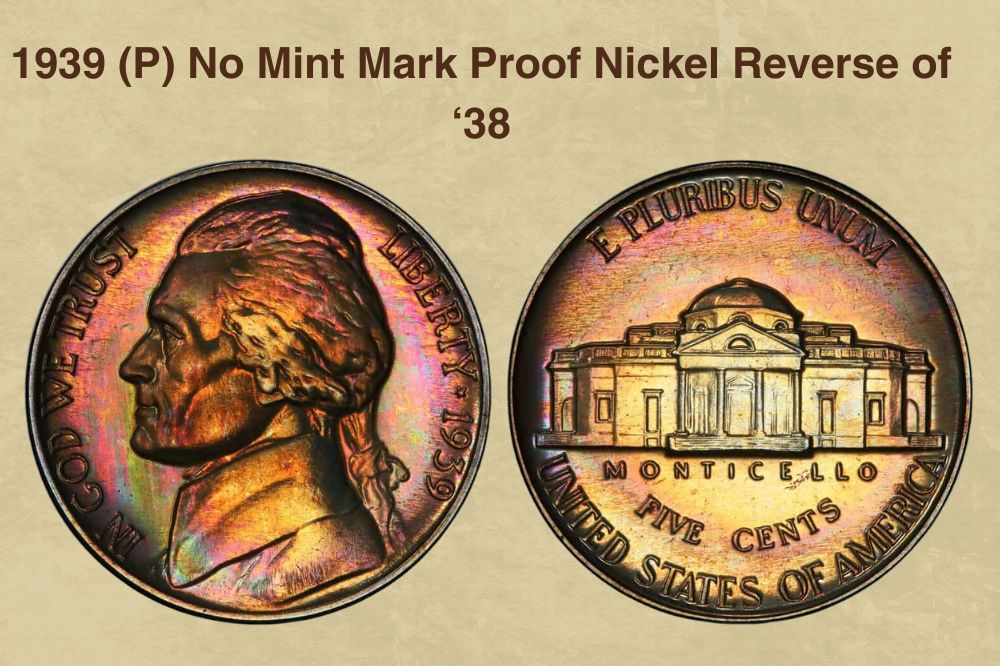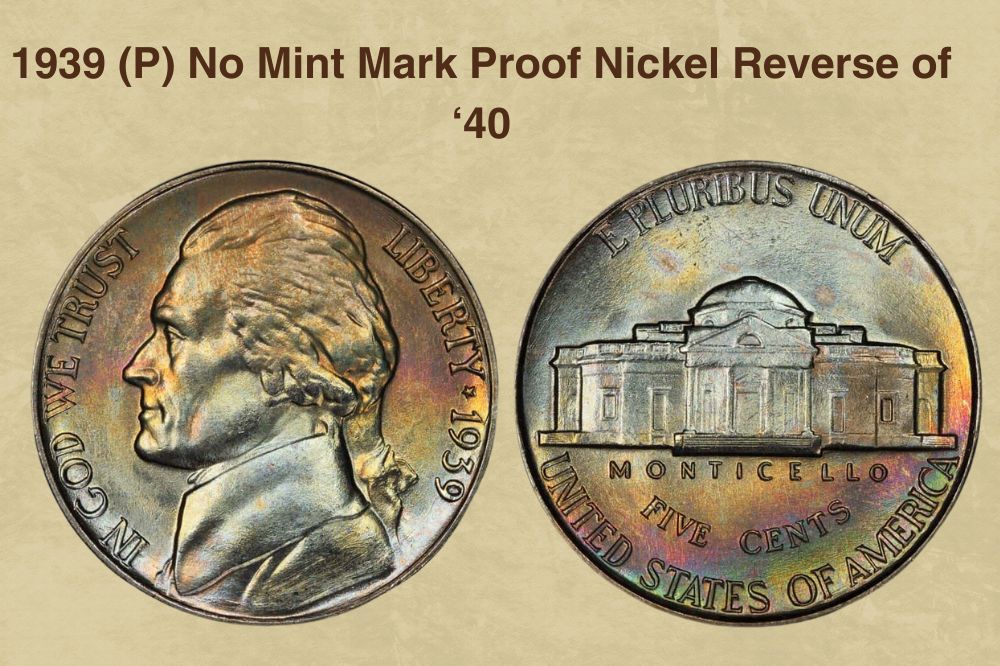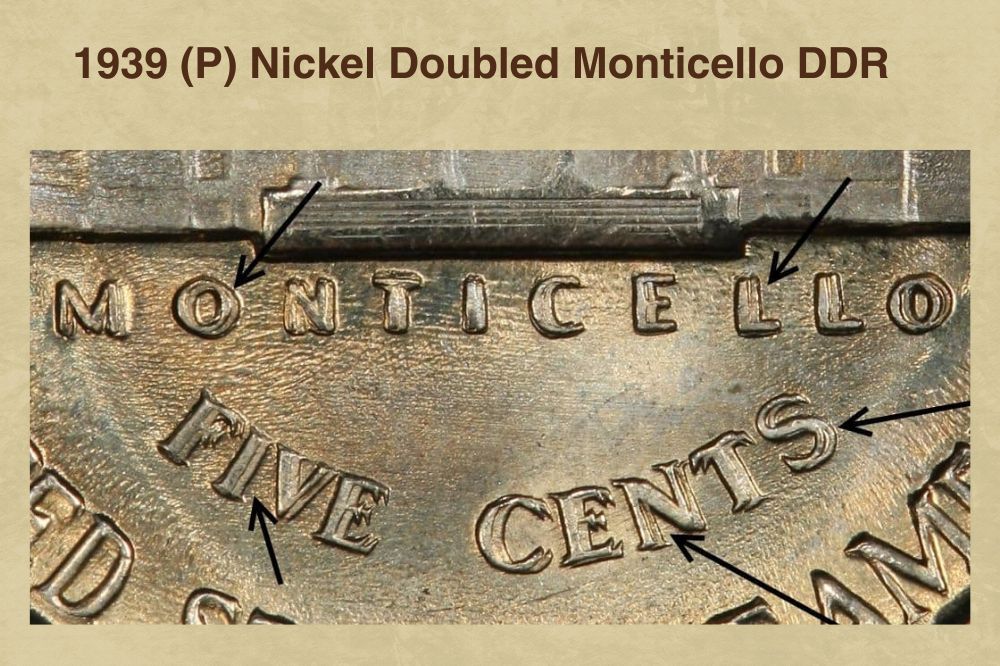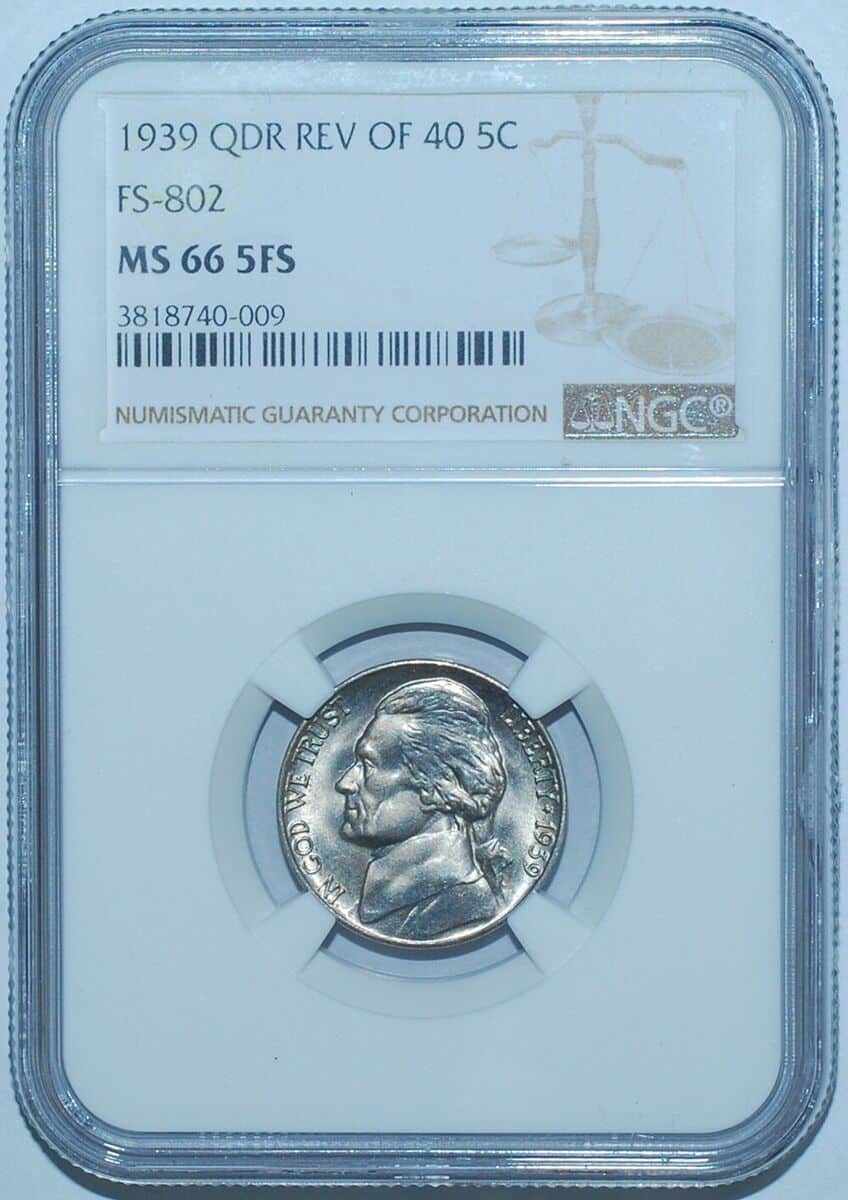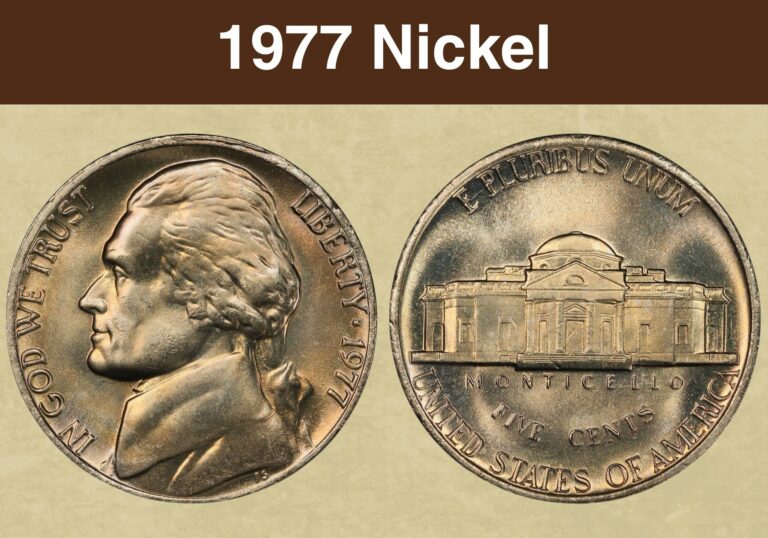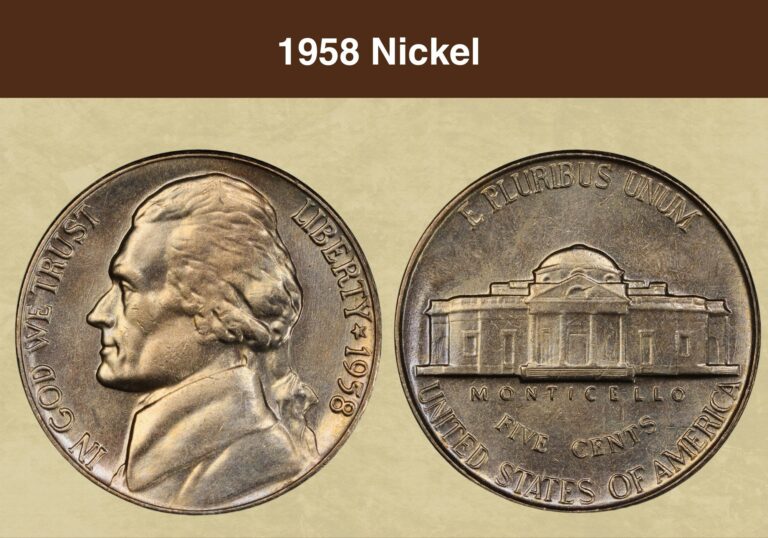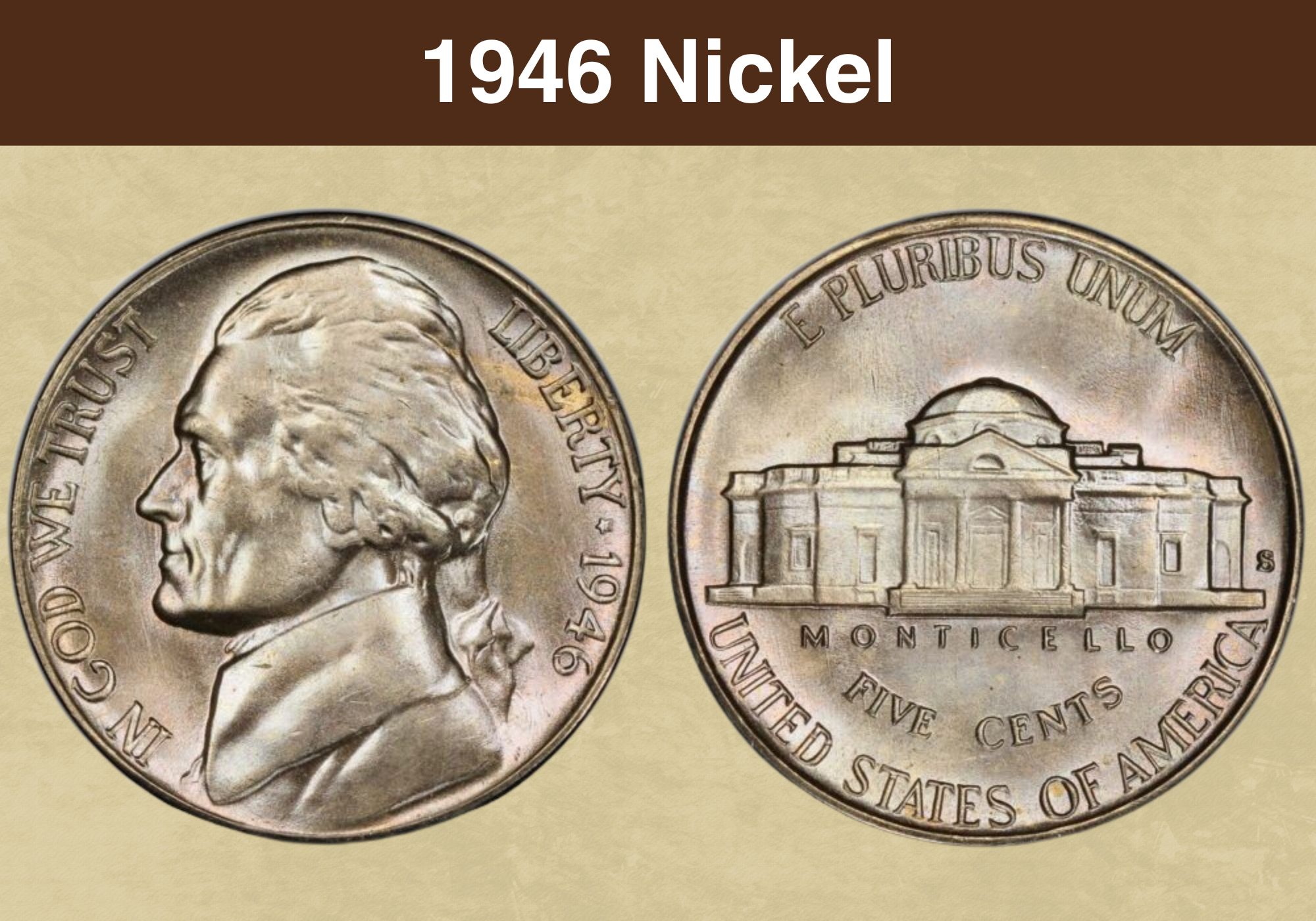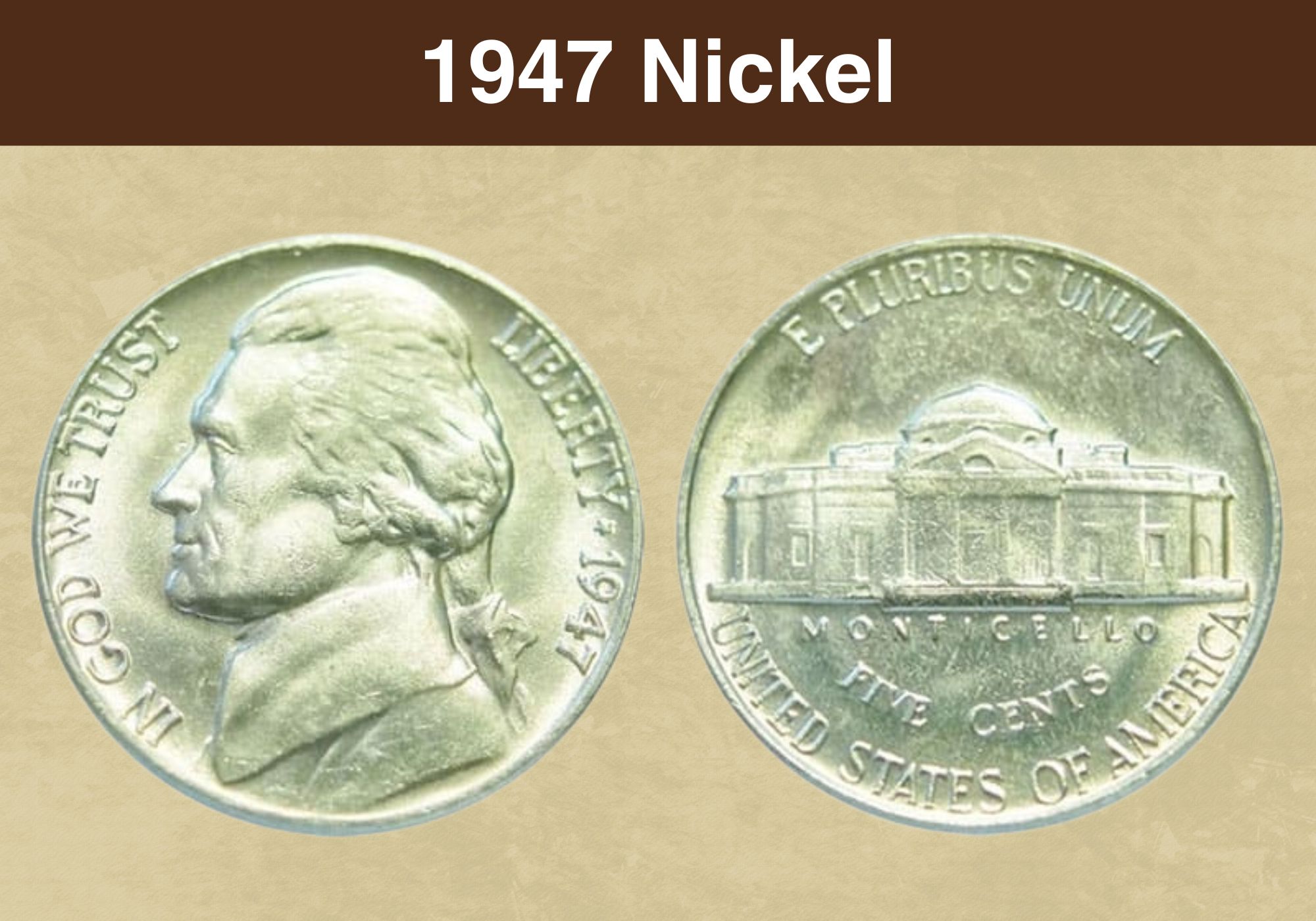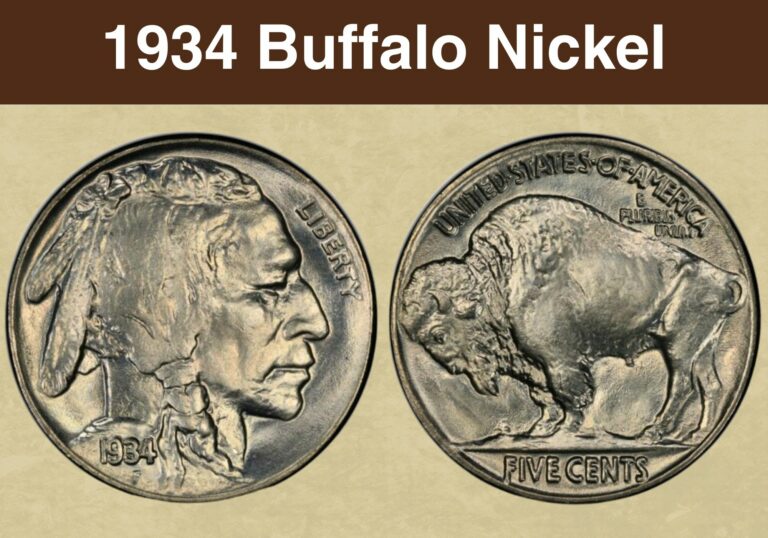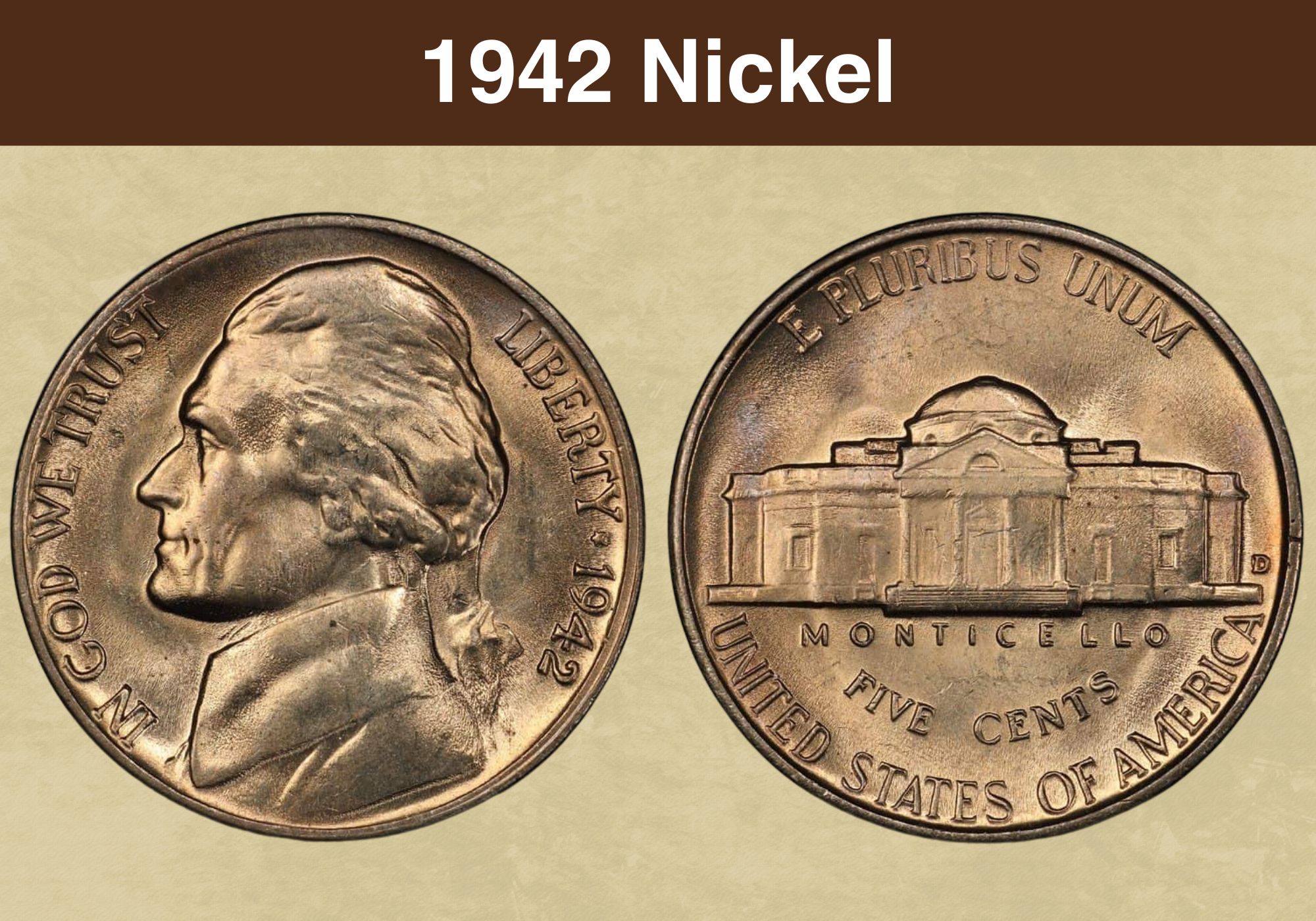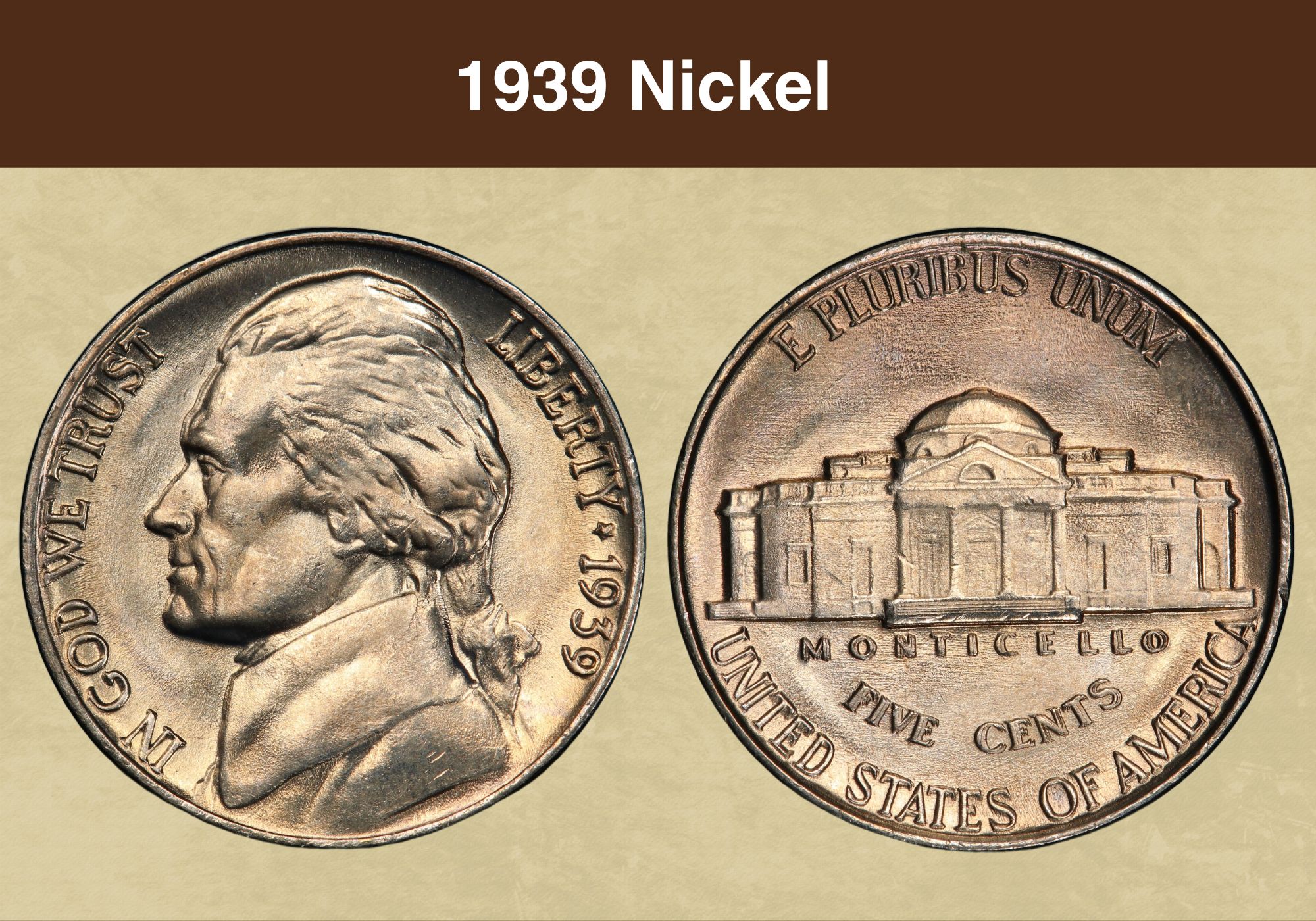
Coin Value Contents Table
- 1939 Nickel Value Chart
- History of the 1939 Nickel
- Features of the 1939 Nickel
- 1939 Nickel Grading
- 1939 Nickel Value Guides
- 1939 Nickel with a Reverse of 1938 Value – All Mint Branches
- 1939 Nickel with a Reverse of 1940 Value – All Mint Branches
- 1939 (P) No Mint Mark Proof Nickel Value
- 1939 (P) No Mint Mark Proof Nickel Reverse of ‘38 Value
- 1939 (P) No Mint Mark Proof Nickel Reverse of ‘40 Value
- Rare 1939 Nickel Error List
- Where to Sell Your 1939 Nickel ?
- 1939 Nickel FAQ
The Nickel is such a ubiquitous nickname – no pun intended – that it got adopted by the world’s least popular rock band. (Yes, it’s an internet thing to hate on Nickelback, but these Canadians do have a decent fan base.) 1939 was the second year of issue for this 5-cent coin. It’s quite unusual and is a semi-key numismatic date. Let’s explore the 1939 Nickel Value.
1939 Nickel Value Chart |
||||||
| Coin | Extremely / Extra Fine EF/XF 45 | Mint State MS 60 | Mint State MS 65 | Mint State MS 66+ | Mint State MS 67+ | Proof PR/PF 68 |
| 1939-S Reverse of ‘38 Nickel | $6 | $24 | $70 | $150 | $850 | – |
| 1939-S Reverse of ‘38 Nickel Full Steps | – | $42 | $260 | $850 | – | – |
| 1939-D Reverse of ‘38 Nickel | $16 | $45 | $100 | $150 | $700 | – |
| 1939-D Reverse of ‘38 Nickel Full Steps | – | – | $425 | $700 | $3,100 | – |
| 1939 (P) No Mint Mark Reverse of ‘38 Nickel | $1 | $5 | $28 | $75 | $550 | – |
| 1939 (P) No Mint Mark Reverse of ‘38 Nickel Full Steps | – | – | $120 | $475 | $5,000 | – |
| 1939-S Reverse of ‘40 Nickel | $6 | $14 | $120 | $375 | – | – |
| 1939-S Reverse of ‘40 Nickel Full Steps | – | $20 | $265 | $2,800 | – | – |
| 1939-D Reverse of ‘40 Nickel | $10 | $32 | $90 | $175 | $750 | |
| 1939-D Reverse of ‘40 Nickel Full Steps | – | $35 | $275 | $1,950 | $5,000 | |
| 1939 (P) No Mint Mark Reverse of ‘40 Nickel | $4 | $6 | $38 | $90 | $400 | – |
| 1939 (P) No Mint Mark Reverse of ‘40 Nickel Full Steps | – | $10 | $60 | $160 | $950 | – |
| 1939 (P) No Mint Mark Proof Nickel Reverse of ‘38 | – | – | – | – | – | $5,500 |
| 1939 (P) No Mint Mark Proof Nickel Reverse of ‘40 | – | – | – | – | – | $14,500 |
History of the 1939 Nickel
The Nickel is a 5c piece that gets its nickname from its nickel content. But it wasn’t the first coin to use this metal. That would be the 2c piece minted from 1864 to 1873 and the 3c piece that followed from 1865 to 1889. Back then, a postage stamp was 5c – known as a half dime or half disme (with a silent ‘S’). Congress wanted that reduced to 3c and passed a bill in 1851.
This was partially prompted by the 1850s Gold Rush. More people could access gold coins, so the prices of metals like silver – which were scarce in comparison – shot up. This made the mint seek alternatives to silver coins, so they experimented with 75% copper and 25% silver for 2c and 3c pieces. When these denominations succeeded, they replaced the silver 5c too.
It was introduced in 1866, and like the two earlier nickel-laced coins, it was designed by the Chief Mint Engraver, James B. Longacre. In 1883, it was updated to the Liberty Head or V Nickel designed by another Chief Mint Engraver, Charles Barber. That was succeeded by the Buffalo Nickel, this time designed by an outsider – commercial sculptor James Earle Fraser.
1938 saw the exit of the Buffalo Nickel and the entry of the Jefferson Nickel, with both coins minted that year. And 1939 is considered a semi-key date, especially for Denver coins. The new Jefferson Nickel was designed by Felix Oscar Schlag, and his contest prize was $1,000. It had been a rough year for him though, and allegedly, he used it all on a funeral for his wife.
Also read: Top 10 Most Valuable Nickels Worth Money
Features of the 1939 Nickel
If you want to look competent when you’re talking about coins, it can be useful to learn the lingo. Here are some basic technical terms. The heads side is the obverse. The tails side is the reverse. The thin side is the edge and it might have reeds. The raised border is the collar or rim. The words are legends or mottos, the images are devices, and the backdrop is the field.
The Obverse of the 1939 Nickel
It shows Thomas Jefferson facing left. The motto In God We Trust runs along the rim in front of him. The legend Liberty is along the rim behind him, followed by a five-pointed star and the mint date. The 1939 Nickel had no signature since the FS wasn’t added until 1966.
The Reverse of the 1939 Nickel
It shows Monticello, Jefferson’s home in Virginia. The word Monticello is under the building and the mint mark is on its right. The coin’s lower rim says United States of America, with the denomination, Five Cents, above this legend. The upper coin rim says E Pluribus Unum.
Other Features of the 1939 Nickel
The 1939 Nickel was 75% copper and 25% nickel. The purpose of the nickel content was to simulate the silver appearance of early American currency while cutting down expenses. The coin weighed 5g and was 21.21mm in diameter. It had a plain/smooth edge without reeds.
Also read: Top 17 Most Valuable Buffalo Nickel Worth Money
1939 Nickel Grading
When you’re grading Jefferson Nickels, check the steps at the back. In addition to the usual Poor (PO 1) to Mint State (MS 70), high-quality coins are judged by the clarity of Monticello’s staircase. Coins graded 5FS or 6FS are the best because you can either count 5 or all 6 of the stairs leading to the building. This adds hundreds or even thousands of dollars to the price.
| # | Grade |
|---|---|
| 1 | Basal State-1 |
| 2 | Fair |
| 3 | Very Fair |
| 4, 5, 6 | Good |
| 7, 8, 10 | Very Good |
| 12, 15 | Fine |
| 20, 30 | Very Fine |
| 40 | Extremely Fine |
| 50 | About Uncirculated |
| 60 | Mint State |
| 65 | Mint State |
| 70 | Mint State |
Please check our grading guides to know your coin scale, It’s the necessary step to know the exact value of your coin.
Check out now: How to Grade Jefferson Nickel?
1939 Nickel Value Guides
Practically speaking, the nickel is the smallest functional coin denomination in the US since a penny can’t buy anything. But like pennies, nickels are currently causing losses at the mint. In 2023, it costs a little over 11 cents to produce a single nickel. That’s more than double its face value! Still, older nickels are a good investment option on the collector’s resale market.
1939 is known as a semi-key date because it had two reverse designs – 1938 and 1940. They didn’t make a specific reverse die for 1939. The difference was at the point where the steps touch the railing or banister. On the 1938 reverse, the boundary is weak and curved while the 1940 reverse strengthened it with a straight border. Let’s look at all the 1939 Nickel varieties.
For reference, the Philadelphia Mint made 120,627,535 Nickels. Meanwhile, the Denver Mint made 3,514,000 with the D Mint Mark, and the San Francisco Mint made 6,630,000 Nickels with the S Mint Mark. Philadelphia coins have no mint marks so they’re described as (P) coins or No-Mint-Mark coins. Time to look into the pricing of 1939 Nickels, then and now.
1939 Nickel with a Reverse of 1938 Value – All Mint Branches
When a coin is introduced, the design isn’t always set in stone, pun intended. Usually, the mint will experiment with fonts and tweaks. And the front of one style might be accidentally paired with the back of another. The 1938 reverse had steps with slightly curved corners. To make this easier and fully cover all three mint branches, let’s look at the prices in bullet form.
- 1939 (P) Nickel Reverse of ‘38 Record Price – An MS 68 was $1,208 in 2021.
- 1939 (P) Nickel Reverse of ‘38 in August 2023 – An MS 67+ is now $5,500.
- 1939 (P) Nickel Reverse of ‘38 Full Steps Record Price – MS 67+ FS: $5,288 in 2014.
- 1939 (P) Nickel Reverse of ‘38 Full Steps in August 2023 – MS 67+ FS: $5,000 today.
- 1939-D Nickel Reverse of ‘38 Record Price – An MS 67+ was $3,310 in 2022.
- 1939-D Nickel Reverse of ‘38 in August 2023 – An MS 67+ is now $673.
- 1939-D Nickel Reverse of ‘38 Full Steps Record Price – MS 66 FS: $7,475 in 2006.
- 1939-D Nickel Reverse of ‘38 Full Steps 2023 – MS 66 FS: $550; MS 68 FS: $25,000
- 1939-S Nickel Reverse of ‘38 Record Price – An MS 67 was $1,528 in 2013.
- 1939-S Nickel Reverse of ‘38 in August 2023 – MS 67 is now $275; MS 67+ is $850.
- 1939-S Nickel Reverse of ‘38 Full Steps Record Price – MS 66 FS: $8,050 in 2006.
- 1939-S Nickel Reverse of ‘38 Full Steps 2023 – MS 66 FS: $650; MS 67 FS: $5,750.
1939 Nickel with a Reverse of 1940 Value – All Mint Branches
Coins paired with a different mint year are sometimes called overdates and are written as 1981/0 (for example) meaning the 1981 was stamped over 1980 so you can see a zero under the 1. But the Jefferson Nickel has a front date and no overdate. The DDR is on Monticello, which in 1940 had straight steps. Once again, let’s use bullet points to make pricing clearer.
- 1939 (P) Nickel Reverse of ‘40 Record Price – An MS 67 was $1,725 in 2005.
- 1939 (P) Nickel Reverse of ‘40 in August 2023 – MS 67 is $150; MS 68+ is $3,000.
- 1939 (P) Nickel Reverse of ‘40 Full Steps Record Price – MS 68 was $23,500 in 2014.
- 1939 (P) Nickel Reverse of ‘40 Full Steps in August 2023 – MS 68 is $6,000 today.
- 1939-D Nickel Reverse of ‘40 Record Price – An MS 67 was $1,093 in 2006.
- 1939-D Nickel Reverse of ‘40 in August 2023 – MS 67 is now $275; MS 69 is $2,750.
- 1939-D Nickel Reverse of ‘40 Full Steps Record Price – MS 68 FS: $26,400 in 2019.
- 1939-D Nickel Reverse of ‘40 Full Steps in August 2023 – MS 68 FS: $27,500 today.
- 1939-S Nickel Reverse of ‘40 Record Price – An MS 67 was $1,150 in 2005.
- 1939-S Nickel Reverse of ‘40 in August 2023 – An MS 67 is now $1,350.
- 1939-S Nickel Reverse of ‘40 Full Steps Record Price – MS 67 FS: $7,800 in 2020.
- 1939-S Nickel Reverse of ‘40 Full Steps in August 2023 – MS 67 FS: $8,500 today.
1939 (P) No Mint Mark Proof Nickel Value
If you’re new to the field, you might not know extra shiny coins are special. They’re called proof coins, and they usually have a mirror-like field and a somewhat hazy device. The words and numbers are frosted too, and these textured sections were struck by pickling the die in acid wash. For the shiny parts, they used burnished blanks and dies scrubbed with horsehair.
Burnishing means tumbling the blank (aka planchet) in a drum full of 6mm stainless steel beads to give it extra shine before striking. Proofs provide perfect samples for the archive, a record of ideal coin condition. Others are sold to collectors at a premium. As we said, there’s no such thing as a nickel with a reverse of 1939, so let’s explore proof reverses of ‘38 and ‘40.
1939 (P) No Mint Mark Proof Nickel Reverse of ‘38 Value
In 1939, the Philadelphia Mint made 12,535 Proof Nickels without mint marks. On 7th August 2010, a Reverse of ‘38 graded PR 68 sold for $18,400. By August 2023, it dropped to $5,500 since PCGS has received almost 20 in this grade. The 3 coins graded PR 68+ sell for $17,500.
1939 (P) No Mint Mark Proof Nickel Reverse of ‘40 Value
A Reverse of ‘40 graded PR 68 sold for $15,600 on 6th June 2022. PCGS has received 2 so far and their value in August 2023 is $13,750. Meanwhile, a PR 67 CAM sold for $10,350 on 8th April 2012. PCGS has received two of these, so their August 2023 value is placed at $5,750.
Also read: Top 17 Most Valuable Jefferson Nickels Worth Money
Rare 1939 Nickel Error List
1939 was a transitional year for the nickel so it has lots of mint mistakes. These range from DDRs to mules. There’s even a QDR in there somewhere! Plus, of course, the usual suspects e.g. misalignment, cud breaks, and double strikes. All these errors can raise the resale price of a coin. Let’s review the most common 1939 Nickel Errors and see how much you’ll make.
1939 (P) Nickel with a Reverse of 1940 Doubled Die Obverse
As we said before, the mules on 1939 Nickels were deliberate, so they’re varieties, not errors. But only Philadelphia got the DDO. The die experienced hub doubling when the die moved between strikes and copied the flaw to all its coins. Check the inner curves of God and the 939 in the mint date. It’s not very expensive though. An MS 67 sold for $797 on eBay in 2021.
1939 (P) Nickel Doubled Monticello DDR
DDR means Doubled Die Reverse. It’s the same mistake as above, but this time the doubling is on the back of the coin. If you have a coin microscope or jeweler’s loupe, you’ll notice the double vision effect on the wording (Monticello and Five Cents). MS 67 was $4,600 in 2002 and an MS 67+ is $6,000 in 2023. An MS 67 FS was $23,500 in 2019 but is $11,500 in 2023.
1939 (P) Nickel Quadrupled Die Obverse – QDR FS-802
Most coins have to be struck at least twice to make sure the design is effectively transferred, and this happens while the die is under construction too. Dies are made by striking with a hub. That’s why doubled-die errors are sometimes called hub doubling. Here, the hub struck the wrong spot four times, hence QDR. An MS 65 was $441 in 2013. MS 67 FS was $3,055.
Also read: 14 Most Valuable Nickel Errors Worth Money
Where to Sell Your 1939 Nickel ?
Now that you know the value of your coins, do you know where to sell those coins online easily? Don’t worry, I’ve compiled a list of these sites, including their introduction, pros, and cons.
Check out now: Best Places To Sell Coins Online (Pros & Cons)
1939 Nickel FAQ
Is the 1939 Nickel Worth Anything?
It can be. 1939 is a semi-key date with a dozen varieties. It’s especially well-known for its muled reverses. Depending on variety and condition, some 1939 Nickels approach $30,000!

